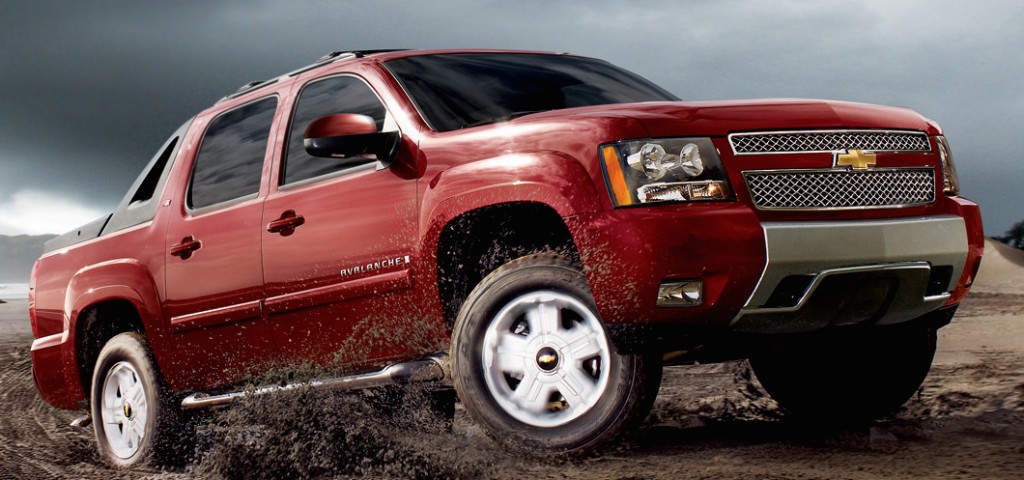One of the main reasons people buy a new truck every few years is to ensure they always have a vehicle that is in excellent condition.
By continuously trading in the old for the new, you generally avoid expensive repairs, assuming you don’t end up with a model that has a particularly bad year. But is there a better alternative?
Opting for used trucks can be a more economical way to manage your expenses, especially as technological advancements continue to improve the reliability of vehicles.
However, it’s also possible to reflect on older, classic trucks with 150,000 miles on the clock, knowing that they’ve likely had their odometer roll over more than once.
Understanding which used work trucks are built to last can guide you in choosing the right model.
Pickup Trucks That Age Gracefully
It’s important to keep in mind that the best trucks for construction work might not necessarily be the best option for off-roading, so it’s crucial to align your specific needs with the truck you select. If you don’t, you may end up dissatisfied with your decision.
2003 Dodge Ram 2500
The 2003 Dodge Ram 2500 is a top choice for those seeking a reliable pickup that can handle work, recreation, and daily driving.
This model offered a selection of three engine options: the 5.7L Hemi, the 8.0L V-10, and the highly favored 5.9L inline-six Cummins turbo diesel.
One common issue that owners of the 2003 Ram 2500 may have encountered is the “death wobble,” which affects off-road vehicles with solid front axles.
This problem causes violent vibrations in the steering, particularly at highway speeds, and it generally persists until the vehicle slows down or stops completely.
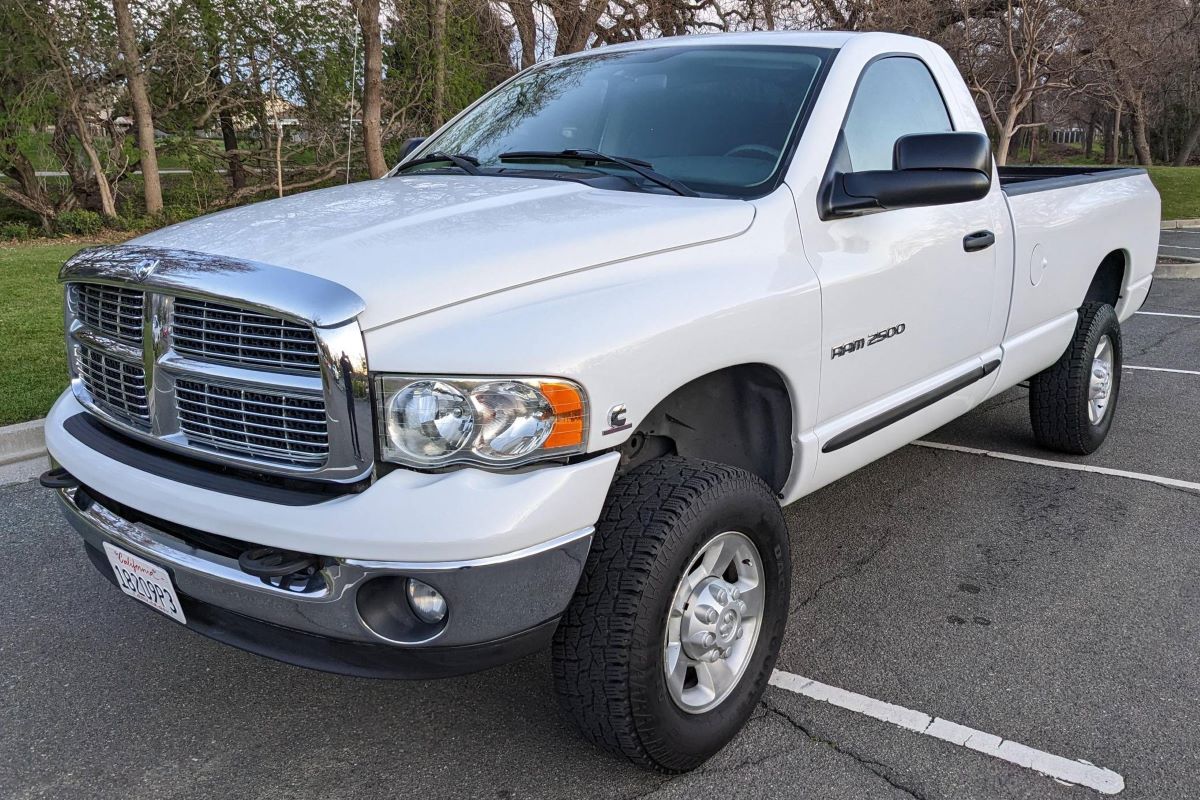
According to owner feedback, the 2003 Ram 2500 has received mixed reviews, but many users praise its durability, with some comparing its endurance to the Energizer Bunny.
Owners have put their trucks to work in various ways, from construction and home improvement tasks to hauling gear for camping or trips to the lake. Others use it for everyday errands, such as shopping and school runs. The 2003 Ram 2500 received a reliability scorereflecting its overall dependability.
However, owners have reported several issues, including engine cranking but failing to start, transmission pressure solenoid problems, water leaks through the rear window, steering wheel vibrations, defective TPMS, electrical issues, and cracked dashboards.
The highest mileage reported for the 2003 Ram 2500 on CarGurus is an impressive 300,000 miles.
2000 Toyota Tacoma
The 2000 Toyota Tacoma stands out as the top choice among the many reliable Toyota trucks, a reputation that dates back to the 1980s. While this particular model may not be the most powerful, it compensates for that with its toughness and durability.
The Tacoma offers a choice of a four-speed automatic or a five-speed manual transmission, both of which are known for their reliability.
The 5VZ-FE V-6 engine, commonly found in many of Toyota’s SUV models, further adds to its dependability, as parts for this engine are easy to find.
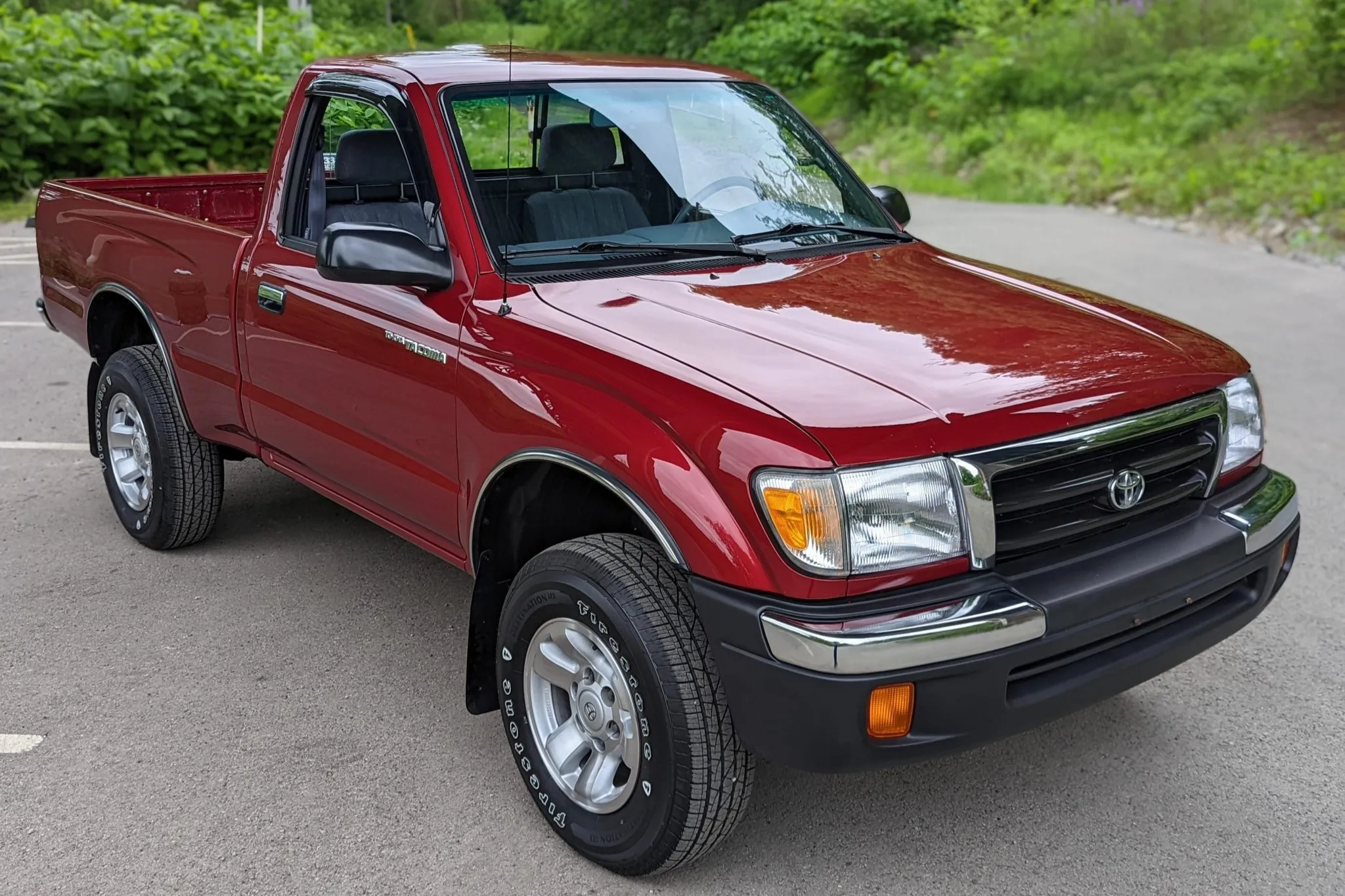
The 2000 Tacoma provides a range of engine options, starting with the standard 2.4L four-cylinder in all two-wheel-drive versions. Optional engines include a 2.7L four-cylinder and a 3.4L six-cylinder that delivers 190 horsepower.
One of the Tacoma’s greatest strengths is the variety of trim levels available, allowing buyers to choose the version that best suits their specific needs, including an off-road trim that is ideal for those who frequently drive off the beaten path.
However, owners have reported several common issues, such as rust, squeaking from the clutch, water leaks into the cab through seals, rattling dashboards, peeling and chipping paint, and TRD emblems falling off.
Despite these issues, the Tacoma’s reputation for longevity is solid, with the highest mileage reported on cars reaching 292,000 miles.
The first-generation Toyota Tacoma was produced from 1995 to 2004 and offered a selection of two four-cylinder engines—a 2.4-liter and a 2.7-liter—as well as a 3.4-liter V-6.
These engines could be paired with either a four-speed automatic or a five-speed manual transmission. Unlike its successors, the first-gen Tacoma was available with only one bed length, but buyers could choose between two cab styles.
The second-generation Tacoma debuted in 2004 as a 2005 model. The new model featured a 4.0-liter V-6 engine, which replaced the old 3.4-liter unit, while the 2.7-liter I-4 remained as the base engine. Toyota also introduced a long-bed variant alongside the standard short bed.
Two off-road-oriented trims were offered: the TRD Sport and TRD Pro. Both featured Bilstein shocks and struts, as well as a heavy-duty high-output alternator. Starting in 2015, the TRD Pro variant came with a two-inch front suspension lift, a TRD exhaust system, Bilstein shocks, and all-terrain tires.
The latest generation, the third-generation Tacoma, was introduced at the 2015 Detroit Auto Show as a 2016 model. While the 2.7-liter I-4 remained the base engine, the 4.0-liter V-6 was replaced by a new 3.5-liter V-6, equipped with Toyota’s D-4S direct- and port-injection system, delivering 278 horsepower and 265 lb-ft of torque.
The base four-cylinder models came with a five-speed manual transmission, while V-6-powered models received a six-speed manual.
A six-speed automatic transmission, replacing the previous four- and five-speed units, was available across all trims. The TRD Pro trim returned in 2017 as the top model in the Tacoma lineup.
In a 2016 First Test, we noted that the Tacoma’s six-speed automatic shifted quickly, though it was prone to hunting for gears. The interior’s fit and finish, however, showed notable improvements compared to the previous generation.
The 2017 TRD Pro trim featured upgrades such as a specialized off-road suspension with Fox internal bypass shocks, unique 16-inch TRD black alloy wheels, a TRD Pro front skid plate, Rigid Industries LED fog lights, and TRD Pro badging.
For the 2018 model year, Toyota added the Toyota Safety Sense-P suite of driver assistance features. The five-speed manual transmission was discontinued for the SR and SR5 models, and a revised grille was introduced for all trims except the TRD Pro.
The 2019 Tacoma models gained two new USB ports, privacy glass for the SR trim, and a blacked-out SX package.
A more thorough update for the 2020 model year brought revised styling, available LED headlights, improved infotainment with Apple CarPlay and Android Auto capability, Toyota’s Multi-Terrain Monitor technology for the TRD Off-Road and TRD Pro models, and a 10-way power driver’s seat.
The 2021 Tacoma introduced the blacked-out Nightshade Edition and the Trail Edition, which offered an array of adventure-ready equipment. The 2022 model year brought a more capable Tacoma TRD. We expect the next-generation Tacoma to arrive for the 2024 model year.
1999 Nissan Frontier
Nissan may not be the first brand that comes to mind when considering the best trucks for construction workers, but the 1999 Nissan Frontier proves to be a surprising choice.
While it wasn’t specifically designed for heavy-duty tasks, the Frontier is more than capable of handling basic jobs, such as towing up to 5,000 pounds and hauling 1,779 pounds.
The 1999 Frontier offers a variety of trims and styles, catering to different needs, but despite some negative online reviews, most of the issues reported by owners are problems that could have been caught with routine maintenance.
The VG33E V-6 engine, found in the King Cab, is a solid option, delivering 170 to 180 horsepower, with a rare supercharged version producing 210 horsepower.
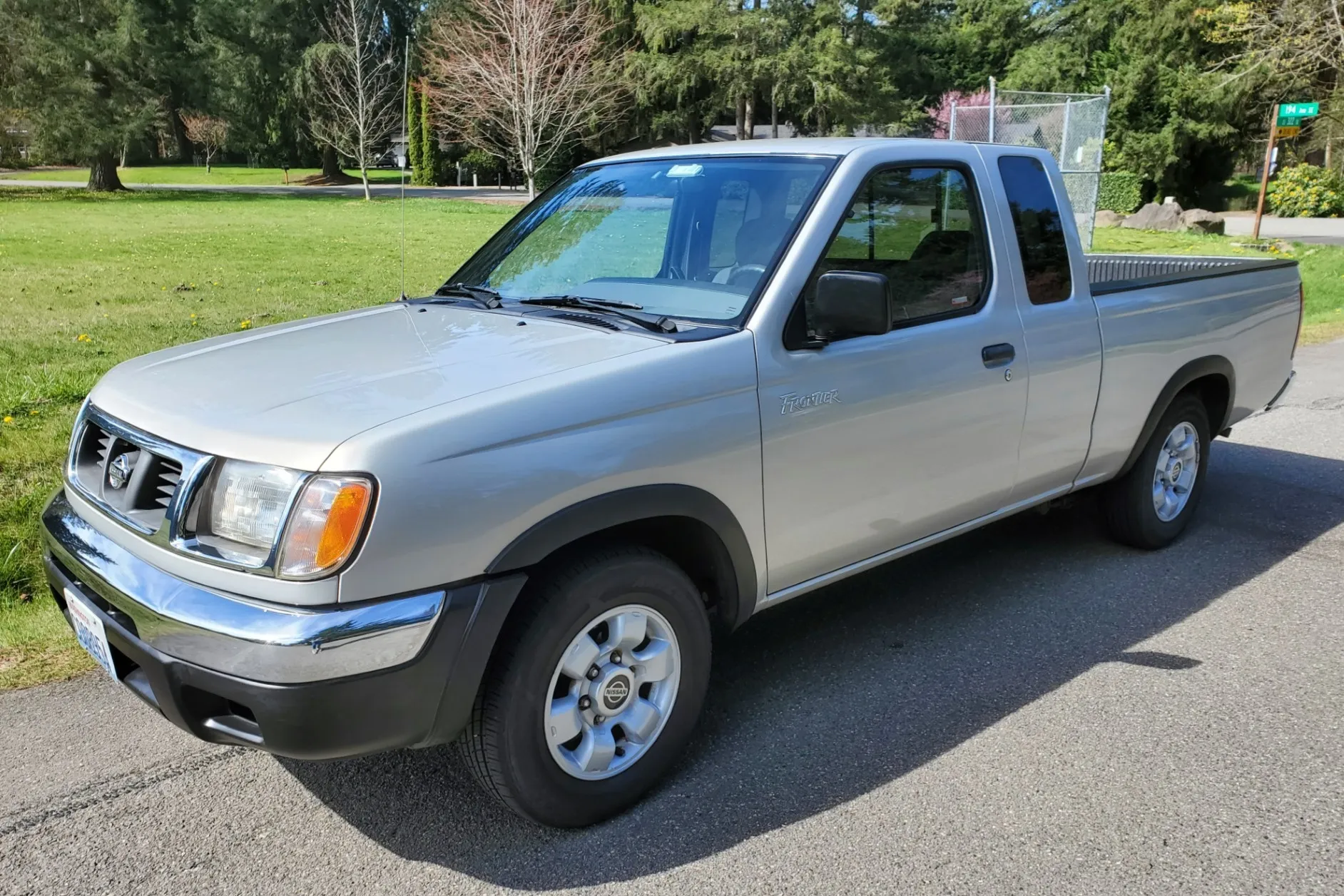
As an interference engine, it’s essential to inspect the timing belt, as it can sometimes pose a problem. Other common issues with these engines include water pump failure, fuel-sending unit problems, and oil leaks.
However, given the truck’s age, most of the reported problems are related to wear and tear rather than design flaws.
Many owners of the 1999 Frontier have expressed their intent to keep their vehicles until they eventually upgrade to a newer model, proving that this truck is built to last.
The 1999 Nissan Frontier earned a 5/5 star rating from cars.com for its reliability. Common issues reported include exterior trim falling off, paint turning chalky, and transmission synchronization problems when shifting quickly.
Also Read: 10 SUVs That Are Overbuilt in the Best Way Possible With Power, Luxury, and Road Dominance
2013 Chevy Avalanche
The ongoing debate about whether the Chevrolet Avalanche qualifies as a truck is likely to continue for a long time, but regardless of the discussion, it falls under the pickup category and deserves recognition for its exceptional reliability.
The 2013 Chevrolet Avalanche received a solid overall reliability rating of 82 out of 100 from J.D. Power, ranking it 3rd in the large light-duty pickup truck class.
The truck offered three engine options, all of which are known for their dependability. These included the 5.3L V-8, the 5.3L E85 V-8 (a flex-fuel engine), and the 6.0L V-8, which is the most powerful of the three.
While these engines are generally robust, they can face issues such as fuel-pressure regulator malfunctions, sensor failures, water pump problems, and in some cases, sludge buildup, particularly with certain 5.3L engines.
The average yearly maintenance cost for the Avalanche is $722, which translates to an estimated $7,220 in maintenance costs over the first 10 years.
The truck has had only one recall, related to shifting out of park. The 2005 Chevrolet Avalanche, however, is considered the worst model to buy used due to its common issue with transmission failure.
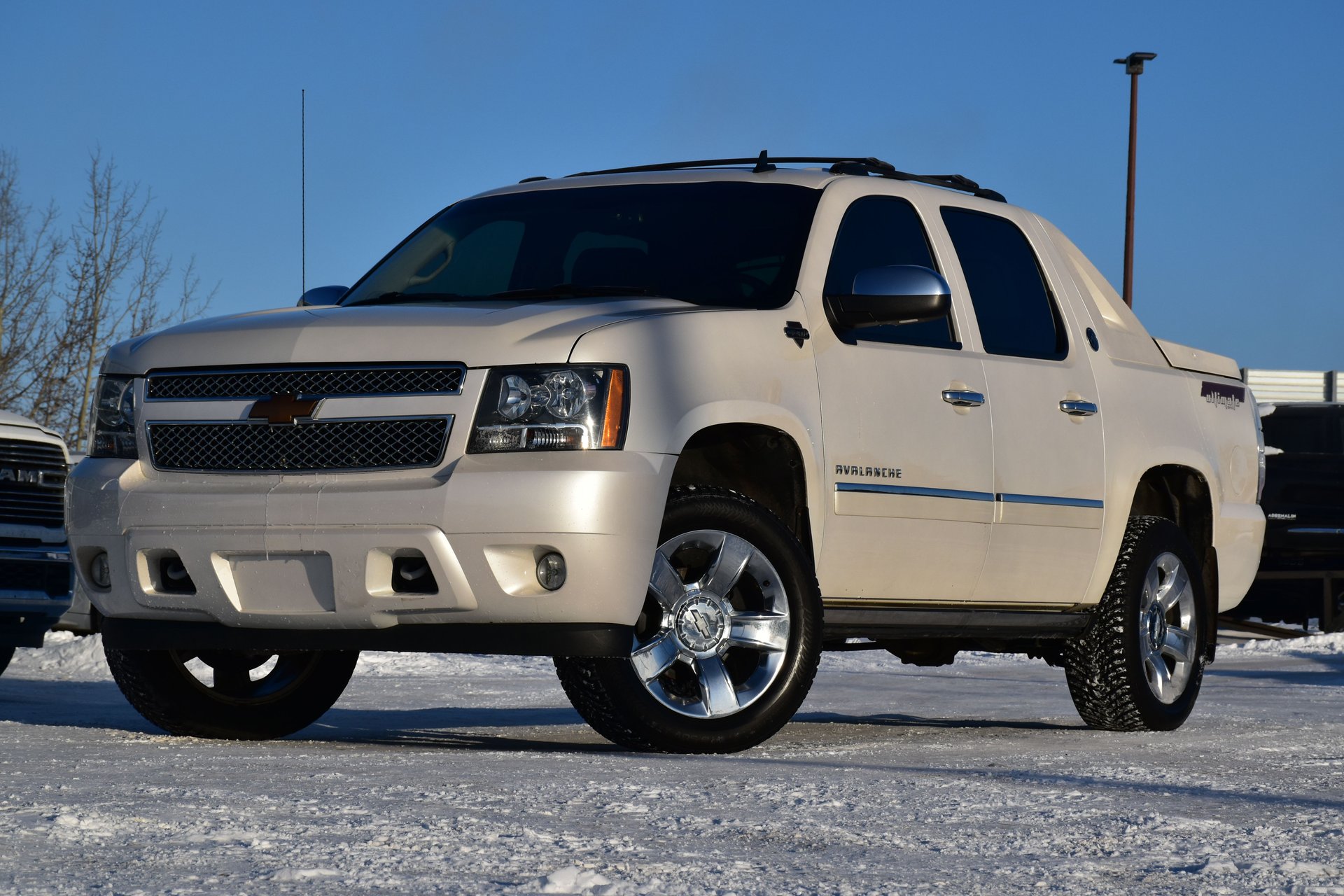
The 2013 model year marks the final year for the Chevrolet Avalanche, as the innovative truck will be discontinued after this year due to declining sales.
For its last year on the market, the Avalanche is largely unchanged from the previous year. It continues to be powered by a 5.3-liter V-8 engine that produces 320 horsepower and 335 lb-ft of torque.
This engine is paired with a six-speed automatic transmission, and the Avalanche is available in both rear-wheel drive and four-wheel drive configurations. Regardless of the drivetrain choice, the Avalanche achieves 15/21 mpg city/highway according to the EPA cycle.
The first-generation Avalanche gained popularity for its variety of engine options, towing capacity, and unique mid-gate, a second tailgate positioned behind the second-row seats that folds down to extend the cargo space into the cabin.
After our last test drive, we noted, “The six-speed transmission makes the Vortec 5300 V-8 feel more sprightly than did the previous four-speed, but the two extra ratios still can’t mask the engine’s slightly peaky power and torque delivery, especially considering the Avalanche’s roughly 3-ton weight.”
To commemorate the final year, Chevrolet is offering the Black Diamond edition of the 2013 Avalanche. This special edition features unique badging, a 2013-only paint color called Fairway Metallic, and body-color trim around the truck bed.
Additionally, the 2013 model comes with several new standard features, including fog lights, remote start, power-adjustable pedals, a rearview camera, and rear park assist, marking a fitting send-off for the Avalanche.
2013 Honda Ridgeline
Now that we’ve reached the final entry, it’s time to talk about the Honda Ridgeline. This truck often sparks debate, with many arguing that it’s not a true truck but rather a car with a small bed.
However, the Ridgeline is quite capable, with the ability to tow up to 5,000 lbs, which is more than sufficient for most campers, as the average camper weighs around 4,500 pounds, leaving you with some room to spare.
It also features a locking rear differential, and although it has just 7.2 inches of ground clearance, it is still a very capable off-roader.
Additionally, the Ridgeline is known for its unique and distinctive design, which sets it apart from other vehicles in its class. When it comes to reliability, it may surprise you that owners love their Honda Ridgelines.

While some have pointed out that the tailgate isn’t designed to lock, most praise the truck’s style, comfort, and dependability. The 3.5-liter J35 V-6 engine is solid overall but can experience issues with defective fuel injectors.
Transmission problems are known to occur occasionally, but aside from that, the Ridgeline is considered a trustworthy companion. Consumer Reports has awarded Honda a perfect 5 out of 5 for both reliability and customer satisfaction, which is rare to see.
The average yearly maintenance cost for the Ridgeline is $534, and over the first 10 years, the estimated maintenance costs total $8,263.
There have been 8 recalls for the Ridgeline, including issues with frame corrosion, accelerator pedal binding, and airbag inflators. The 2006, 2007, 2008, 2017, and 2019 models are considered the worst Honda Ridgeline years to buy used.
Pickup Trucks That Rust Prematurely
There are numerous good pickup trucks still in excellent working condition from 10 to 20 years ago that are available for sale at reasonable prices in the used vehicle market.
However, it’s important to avoid models that are prone to costly repairs or excessive rust, as labor costs in the West can be quite high.
What might seem like a bargain price can quickly turn into a headache if you’re not careful and end up with a truck that needs expensive repairs.
The ideal choice would be something like a 4-cylinder S-10 from the 90s. This type of truck is relatively easy to fix and maintain.
On the other hand, you’d want to steer clear of vehicles like a mid-2000s Uplander, as these minivans are notoriously difficult to repair. The cost of ownership for these vehicles is vastly different.
The S-10 can be fixed with a basic set of hand tools and a multi-meter, while the Uplander often requires major work, such as engine removal, just to perform basic repairs. The same goes for rust problems dealing with rust is expensive, and it’s something you definitely want to avoid.
Chevy Colorado
Speaking of the S-10, its successor, the Chevy Colorado, is generally solid mechanically. However, the frames and lower rocker areas of these trucks are especially prone to rust in regions where road salt is frequently used during inclement weather.
If you’re considering buying one, it’s best to purchase it from a location that hasn’t been exposed to snow and ice.
While the mechanical components of the Colorado seem to hold up well, photos of rust damage from northern states serve as a reminder of an era before Canada implemented stricter rust-resistance standards.
These standards pushed manufacturers to start using practices such as dipping body panels in galvanizing compounds and incorporating composites where possible to prevent rusting.
Few vehicles have performed as well in our Of the Year programs as the Chevrolet Colorado. The previous-generation version earned our top truck honor twice, and the current model was named our 2024 Truck of the Year.
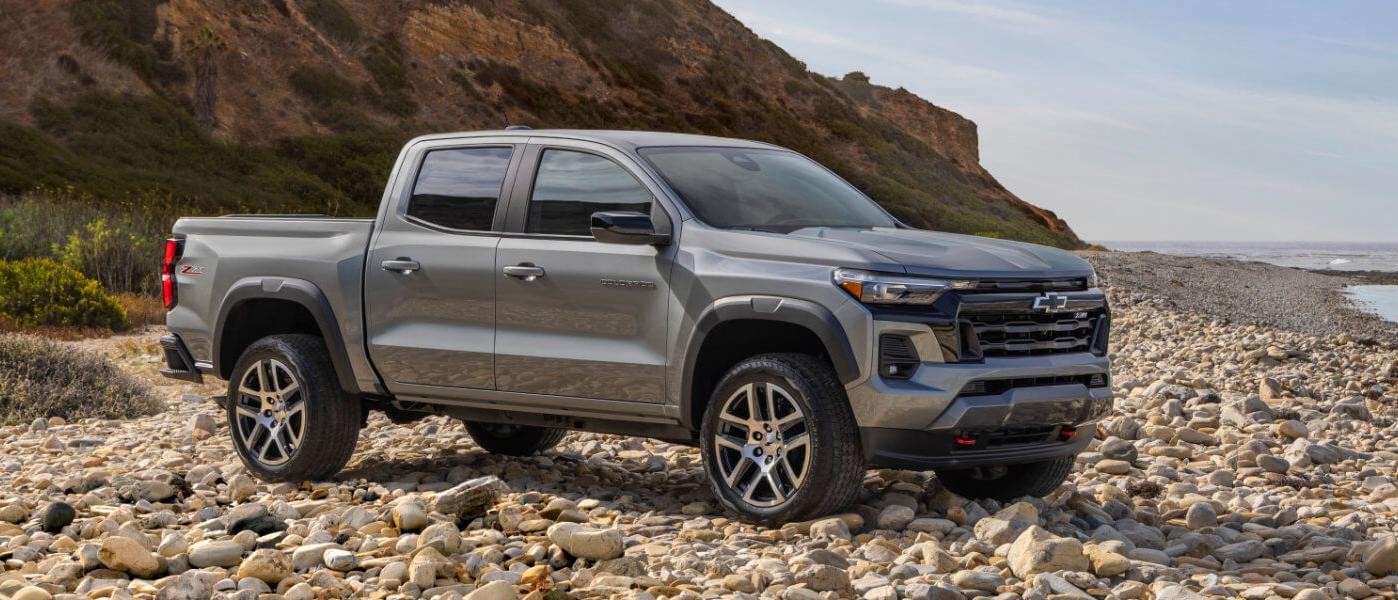
Unless you regularly need to tow more than 8,000 pounds or carry over 1,600 pounds in the bed, this is one of the most appealing trucks available. Competing midsize pickups include the Toyota Tacoma, Ford Ranger, and GMC Canyon.
Chevrolet introduced a fully redesigned Colorado in 2023, featuring bold new styling, upgraded powertrains, and a significantly improved interior.
The 2024 model year brought further enhancements, including the rugged ZR2 Bison variant and the standardization of the 11.3-inch digital instrument cluster. For 2025, the Colorado lineup sees the discontinuation of the entry-level LR2 Turbo engine, leaving the L3B TurboMax as the sole powertrain option.
We were immediately impressed by its new turbocharged four-cylinder engine, which delivers both refinement and torque—even hitting 430 lb-ft. The truck’s handling through curves is surprisingly composed, feeling more like a smaller, lighter vehicle. Even the mid-range LT trim is both comfortable and well-equipped.
While we’d still like to see a low-range transfer case available and did observe some early quality issues in initial builds, the Colorado’s off-road capabilities stand out—especially in the Trail Boss, Z71, and ZR2 models.
In a head-to-head comparison with the Jeep Gladiator Mojave X and Toyota Tacoma TRD Pro, the Colorado ZR2 Bison emerged as the winner.
Interior quality is generally solid, although the rear seat could use more space. While there are some lower-grade materials in places, Chevrolet has mostly done a good job masking cost-cutting.
The large infotainment screen and standard digital gauge cluster are standout features. Overall, the 2025 Chevrolet Colorado is a well-rounded, comfortable, and modern midsize pickup, earning its place among the top in the segment.
All 2025 Colorado models now feature variations of the 2.7-liter turbocharged inline-four paired with an eight-speed automatic transmission.
Rear-wheel drive is standard on most trims, with four-wheel drive available at an added cost. Previously, base WT and LT trims were equipped with a version of the turbo-four producing 237 hp and 259 lb-ft of torque.
For 2025, all trims now receive the TurboMax engine, delivering 310 hp and 430 lb-ft of torque. Fuel economy for rear-wheel-drive models is rated at 19 mpg city and 23 mpg highway.
For four-wheel-drive models, those numbers drop to about 17/21 mpg, and can go as low as 16/16 mpg in the ZR2. In performance testing, 0-60 mph acceleration ranges from 6.0 to 6.9 seconds depending on the trim level.
1990s to Mid-2000s Dodge Fullsize Light Trucks
These trucks are notorious for rocker panel rust. Like many Chrysler products from this period, they suffer from electrical wiring issues, which are often caused by electrolysis and are difficult to repair.
The silver lining for these models is that due to the common rust and wiring problems, there is an abundance of usable parts in junkyards, as many owners discarded these trucks long before the engines wore out.
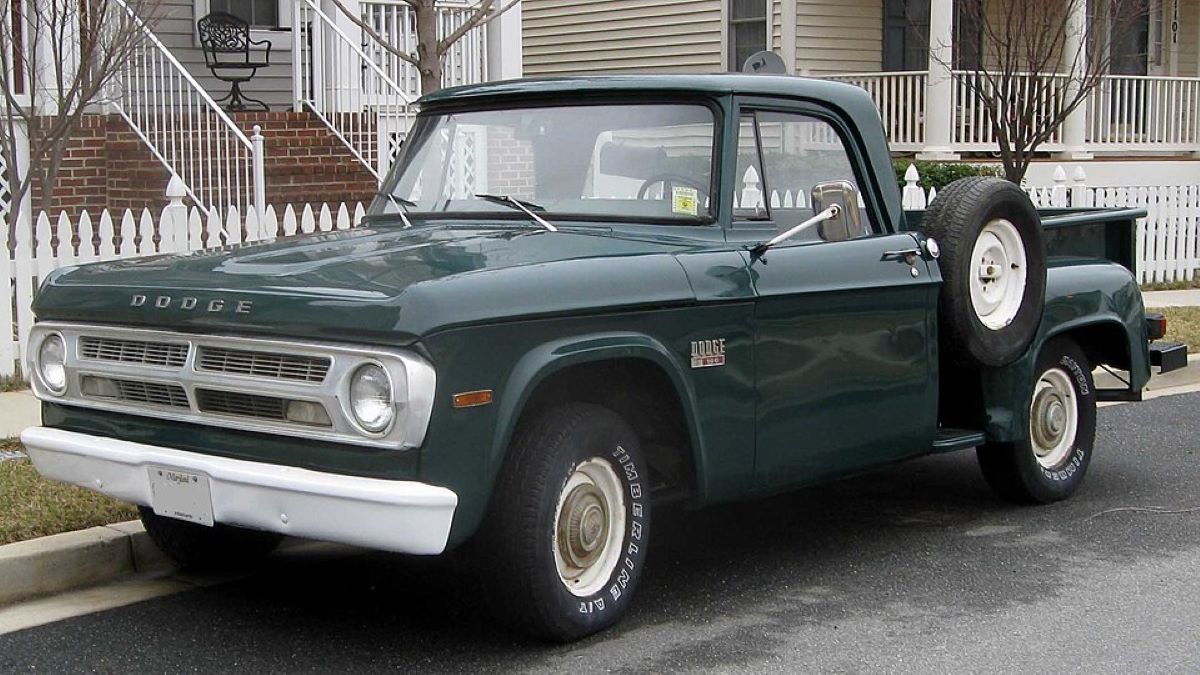
If you’re considering purchasing one of these trucks, aim for a mileage of under 150,000 miles, and you should be alright.
The short answer, however, is that this is not the kind of truck you’ll be boasting about reaching 300,000 miles with only a few repairs it simply isn’t designed for that kind of longevity. Whether it’s a 1500 or a 3500, it makes no difference.
Early 2000s Nissan Frontier
Mechanically, these trucks are average neither the best nor the worst in terms of reliability. Their biggest issue, however, is their susceptibility to electrolysis.
While body rust isn’t a significant issue on most models, the battery cable connections, brake calipers, and wiring connections are constantly attacked by corrosion.
This type of rust is particularly troublesome because it leads to issues like brake calipers seizing and causing the brakes to lock up, or the clutch pedal going to the floor due to a failing third master cylinder, which may wear out every 18 months because of pitting.
The engine may also surge due to inaccurate sensor readings, as the computer struggles to get proper input data. If the truck has over 150,000 miles, it’s best to approach this model with caution.
Anyone skeptical of Charles Darwin’s theory of survival of the fittest need only glance at the modern automotive landscape. Trucks are swiftly overtaking cars, not just in sales but also in design evolution.
What were once rugged utility vehicles are becoming increasingly luxurious and sporty, while pickup beds—used less frequently for actual hauling—are shrinking to near-decorative proportions, not unlike the vestigial wings of an ostrich.
Nissan’s Frontier crew cab is the first U.S. truck to fully showcase this kind of automotive evolution. Its cab, the part people interact with most, has been significantly expanded to include two 29-inch-long front-hinged rear doors and a functional rear bench seat.
To accommodate this spacious cab on the existing two-door extended-cab Frontier chassis, the traditional six-foot bed was shortened by almost 20 inches. And this isn’t an isolated case—many more similarly designed pickups are on the horizon.
On paper, this configuration seems entirely logical. The four-door Frontier offers 36 cubic feet of interior passenger volume in the back seat—equivalent to a Nissan Sentra—and 32.4 cubic feet of cargo space in the bed, all within a body no longer than a Mercury Sable.
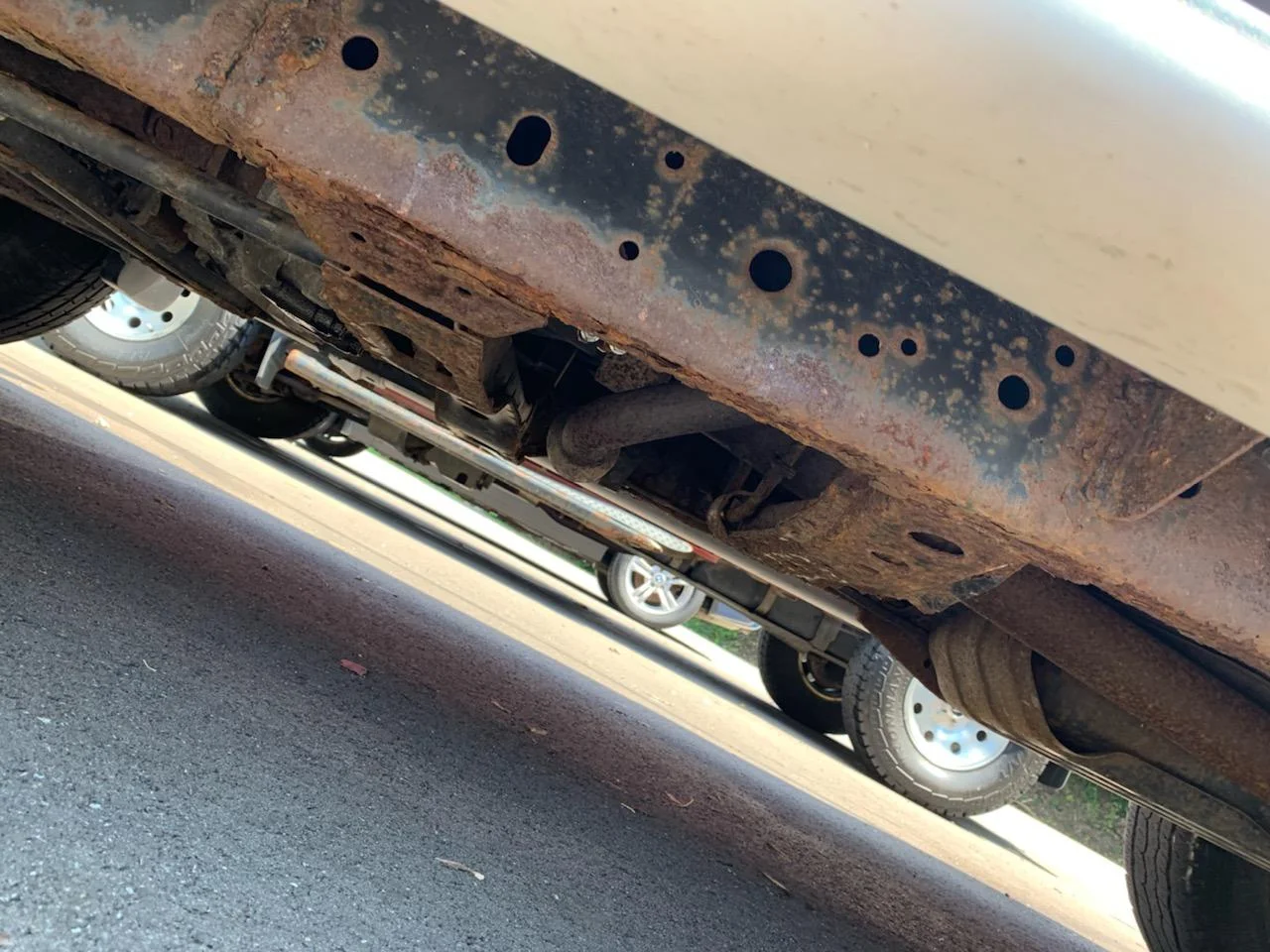
Previously, buyers seeking a pickup with a comparable back seat had to step up to full-size extended-cab trucks stretching over 18 feet long. Trying to navigate one of those through a supermarket parking lot? You’d better keep your insurance paperwork handy.
In contrast, the new Frontier handles like a shopping cart—remarkably nimble for a pickup. However, it’s not without trade-offs. Two adults can ride in the back fairly comfortably on short trips (there’s even a third belt, though the middle seat is more suitable for a child).
Still, the low seat cushion and lack of thigh support mean adult passengers will find their knees tucked toward their chests, making long rides uncomfortable. Accessing the rear is also less convenient than in a sedan due to the narrow door openings.
Nissan’s own Xterra SUV, built on the same assembly line and using the regular-cab Frontier’s chassis, has taller, wider rear doors and a higher, more supportive rear seat—but it lacks the hose-it-out utility of a pickup bed.
Extended-cab versions of trucks like the Chevy Silverado offer a more comfortable rear bench, but with 28 more inches in length and an extra foot in width, they’re harder to manage in tight spaces.
The cargo bed—measuring just 54.7 inches long—is also a compromise. Though Nissan offers a locking tonneau cover or a cap to enclose the bed, the crew cab’s owner’s manual warns that it isn’t designed to safely carry a conventional camper shell.
The bed can fit about a cubic yard of mulch or dirt, though you’ll have to be cautious when unloading with a front-end loader—the 70-inch-wide bucket will likely spill material even when positioned diagonally. Hauling drywall requires leaving the tailgate closed and letting it overhang, which risks cracking the sheets.
And if you’re looking to haul power toys—dirt bikes, ATVs, Jet Skis—you’ll find the bed lacking in size.
The load floor measures 76 inches from the front of the box to the back edge of the open tailgate, which isn’t enough for snowmobiles and only allows for the shortest recreational vehicles.
Fortunately, Nissan includes tie-down loops in each corner of the bed and offers accessories like roof racks, bike mounts, and a bed extender that helps secure cargo beyond the tailgate.
Owners will need to be mindful of weight limits, too. The top-tier SE trim has a curb weight of 4,146 pounds. Subtract that from the truck’s 5,200-pound gross vehicle weight rating, and you’re left with a modest 1,054-pound payload capacity.
Factor in four large adult passengers, and your remaining cargo allowance is only a few hundred pounds. As for towing, the Frontier is rated for up to 5,000 pounds.
Still, the Frontier crew cab could be the perfect fit for a certain group of buyers. Whether equipped with rear-wheel or four-wheel drive, it benefits from the heavy-duty, high-riding 4WD chassis and comes standard with a 170-horsepower V-6 engine.
The base Frontier XE crew cab starts at $17,810 with rear-wheel drive, and an additional $2,600 gets you a part-time shift-on-the-fly four-wheel-drive system with auto-locking hubs. Manual-locking hubs come standard on the four-cylinder four-wheel-drive Frontier models.
Also Read: Top 10 Budget-Friendly & Luxury Trucks You Can Buy
Generation 2 and 3 Ford Bronco
The mechanical components of these trucks do not lend themselves to high-mileage durability. If you come across one, be wary because these were built before Ford implemented serious rust-proofing measures.
By the mid-1980s, Ford had greatly improved the corrosion resistance on vehicles designed thereafter, but this model, designed in the late ’70s, did not benefit from those advancements.
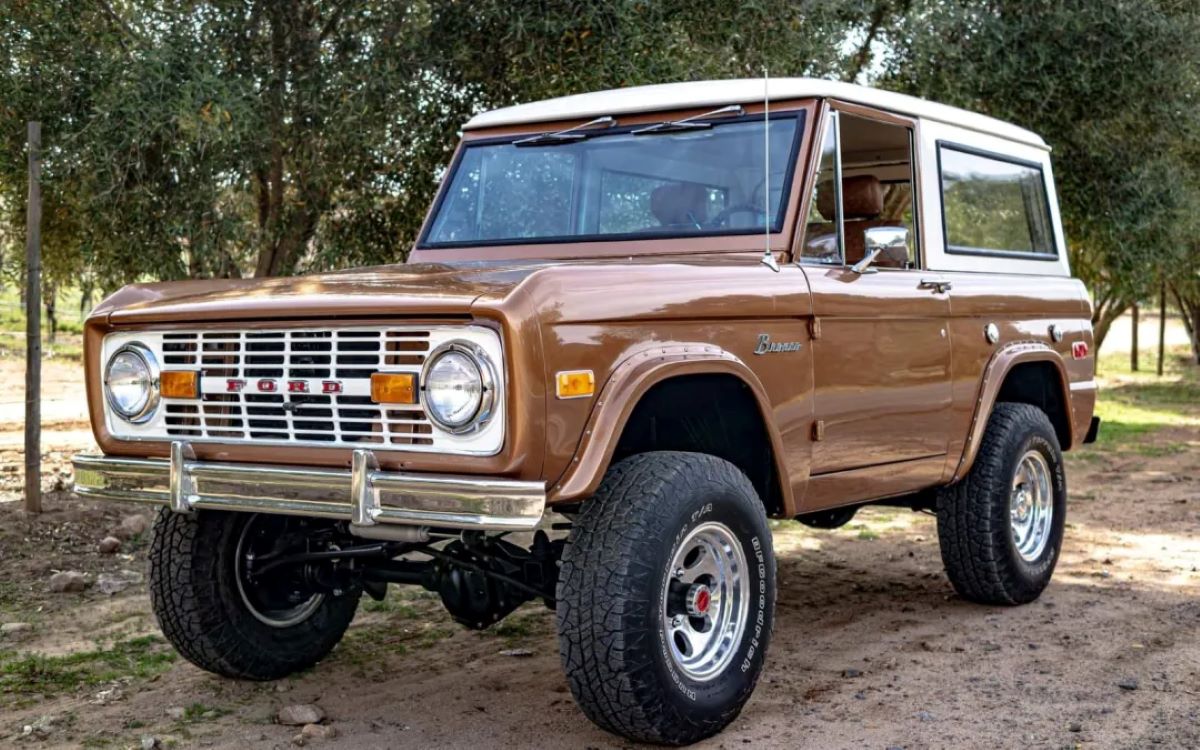
You may have better luck with one manufactured after 1987, as those saw some design improvements. Be prepared for the outdated interior features and the “bing-bong” interior alarms, which could become quite annoying.
Chevrolet Silverado, GMC Sierra 1998-2012
This is one of those trucks you’ll likely end up listing for sale on a site like Letgo or Craigslist. While the drivetrains on these trucks are excellent and a big upgrade from their predecessors, the bodies tend to fail.
By the time you find one, these trucks are often high-mileage, and while they can last beyond 250,000 miles with proper care, the bodies are prone to rust, particularly around the wheel wells and lower rockers.
If you find a well-maintained truck from a southern state, it could be a good buy. However, if it has seen winter use in the rust belt, you should look elsewhere.
The first generation of the GMC Sierra spanned from 1988 to 1998 and was essentially a version of the Chevrolet C/K truck. The C/K line was replaced by the first-generation Chevy Silverado for the 1999 model year, which was paired with the now second-generation GMC Sierra.
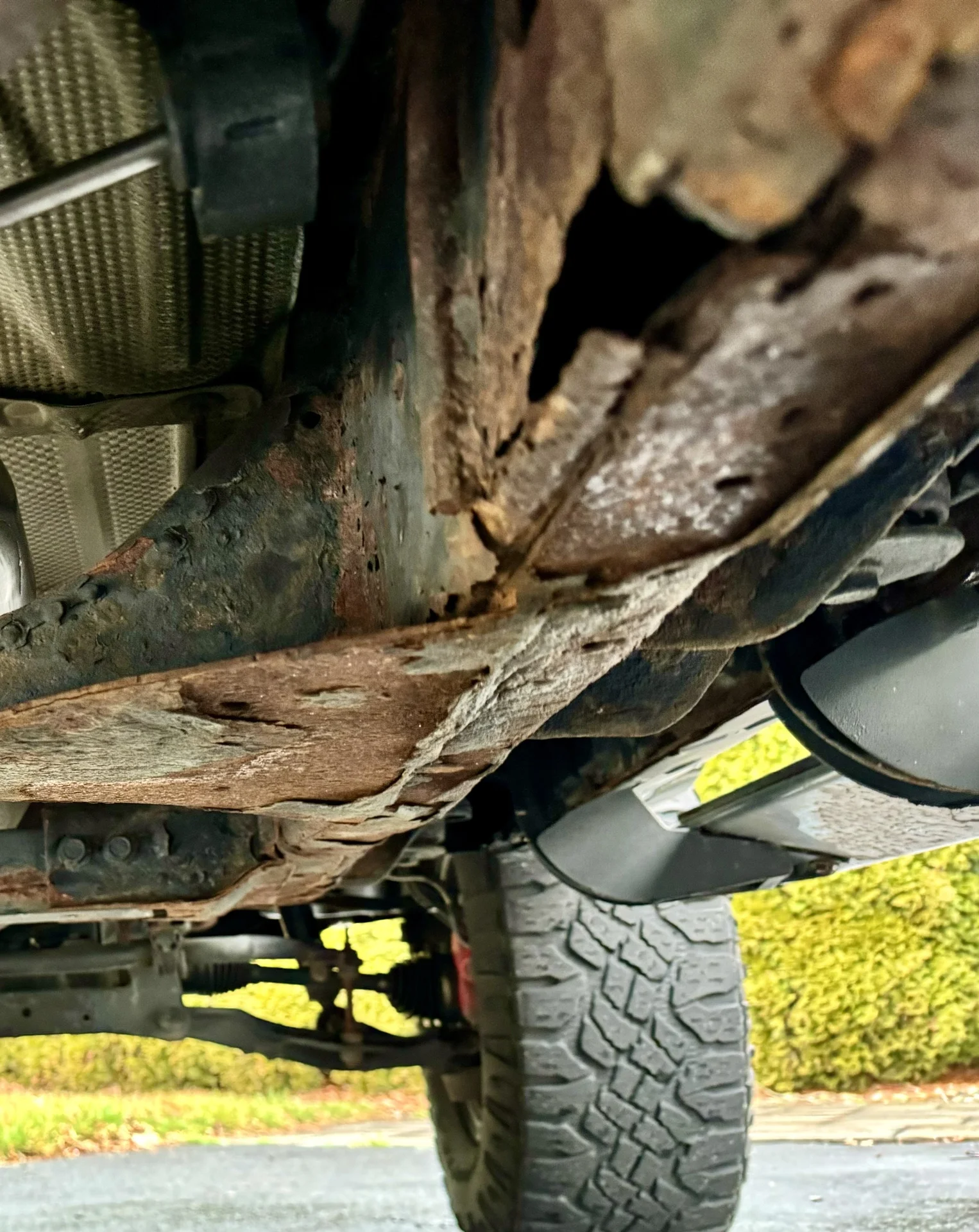
About four years later, the Sierra received a facelift that lasted until the third-generation redesign, which came for the 2007-2013 model years. While there was no major facelift during this period, the Sierra did undergo various updates each year, including a light refresh for the 2010 model year.
The fourth generation debuted with the 2014 model year, bringing new EcoTec3 gasoline engines, a mild-hybrid system, and an eight-speed transmission in certain powertrains.
A refresh followed for the 2016 model year, and then the fifth-generation GMC Sierra arrived in 2019. This new generation introduced a turbocharged four-cylinder base engine and an available diesel option.

